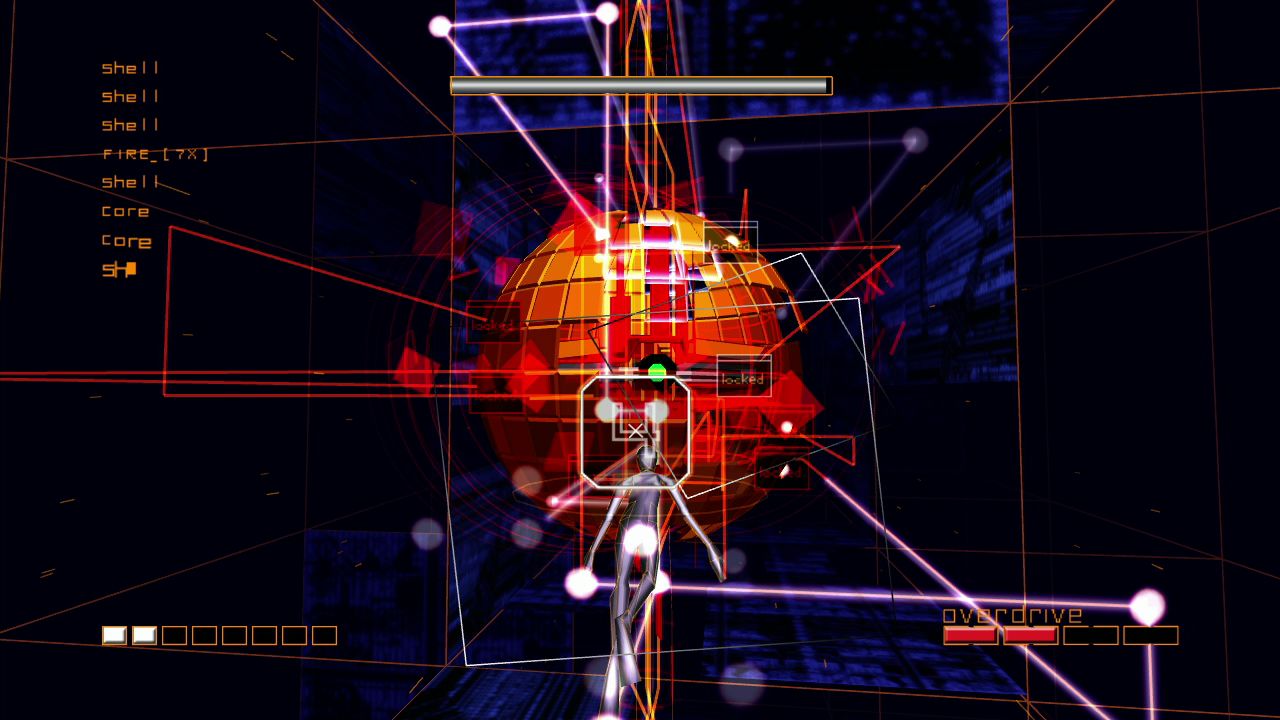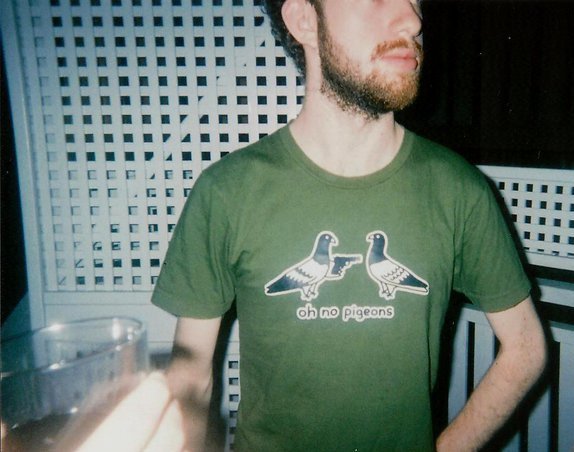Monday, June 27, 2011
Child of Rez
Rez had no right to be a good game. Its level of interactivity is down there with point-and-click adventures, Heavy Rain, and shopping mall directories. You move along on automatic rails, merely moving a crosshair over targets that appear in the same place every time you play. You point at things and they die. This is all there is to it. To get away with such minimal interaction most games would require an extensive narrative, but Rez has about as little story as it does interactivity. There is an artificial intelligence trapped in a computer network and you are trying to free it. That is pretty much it. Yet, despite this lack of interaction and story, Rez manages to be an utterly engaging experience.
So when Twitter assured me I could still enjoy Child of Eden without a Kinect, picking it up was a no-brainer. I tried not to get too excited; I tried not to expect too much, but the very fact that I had no idea what to expect probably, contrarily, made me more excited. When I first played Rez on an Official Playstation Magazine demo disc (that I had purchased for the metal Gear Solid 2 demo) I had no idea what it was I was experiencing. Rez was the most unique gaming experience I had ever encountered when I first played it and, despite knowing better, I was hoping for something just as new this time around.
Sadly, though, the first thing you notice about Child of Eden is that it is not so much a spiritual successor of Rez as it is a direct sequel. Mechanically, very little has changed. You hold down a button while moving a crosshair around the screen, lock onto a maximum of eight targets, then release the button to fire and watch those targets explode into dazzling displays of light and sound. It relies on the same music/visual/haptic synthesis (though, I would argue not synesthesia) with the bass-thud vibrating through the controller, the handclapping of the crosshair when no target it locked, the psychotic and nonsensical worlds pulsing along to the beat. It's all there. The only mechanical difference is the baffling need to hold down a different button to fire the tracer at purple projectiles. I understand that with a Kinect, the tracer and the normal laser can be fired simultaneously, but with a controller you can only fire one or the other, which means many targets will escape as you try to control the fiddly crosshair to destroy the fifty missiles hurtling towards you with all the speed of a drifting continent. It's Child of Eden's only real mechanical innovation and also its weakest element.
Yet, despite the mechanical overlap, Rez and Child of Eden differ greatly in terms of thematic, aesthetic content. Just like Rez, every element of Child of Eden complements and build towards a central, consistent theme, and it is interesting to look at how the two games differ in this regard. Both games explore (in their own very abstract ways) the relationship between humans and technology, between consciousness and artificial intelligence, between the 'real' world and the virtual world. In Rez, you are trying to liberate an artificial intelligence construct from within a computer network (interestingly, the a.i.'s name is Eden). In Child of Eden, you are trying to rescue a real human's consciousness from within the internet (the internet now being known as Eden). Or something like that. The stories are not very coherent--or important, for that matter. Still, the little synopses for each game highlight the intertwined themes both games deal with and the subtly different perspectives and nuances of each.
As Rez's Eden is a fundamentally technological being, so too are Rez's aesthetics. All the game's visuals and sounds reflect themes of technology, science, computers, artificial intelligence, etc. The visuals are all rigid wireframes and flat polygons; the music is all techno beeps and industrial thuds. The playable character's health, too, is portrayed literally in its technological/visual layers. At lowest health, the character's model is a simple sphere, representative perhaps of a single vertices. As the player obtains more health, the character evolves first to a wireframe model before obtaining a mesh, polygons, textures, and, at the final stage, seems to become a living human child. Perhaps, ultimately, Rez is about technology aspiring to become 'actual' life.
Child of Eden's girl-that-requires-saving, on the other hand, is fundamentally human and the game's aesthetics are all about technological invasions on organic life. The jagged wireframe edges and flat polygons have been replaced with curving, twisting, sparkling tentacles and petals and waves. The robotic, rigid, Tron-like enemies are now bubbles and birds and cells and flowers. The music is less industrial electronic and more trancey pop complete with vocal tracks and chimes. Even the fact that the game is intended to be played with Kinect--with the player's own limbs--rather than the traditional controller shows the emphasis shift from the technological to the organic, with a complete absence of any playable character from the screen.
Yet, despite the emphasis on organic life, Child of Eden just feels stagnant next to Rez. Rez had a sense of motion to it, of constant progression and evolution that Child of Eden failed to instill. In Rez you were always moving forward, moving deeper into the virtual world as you got closer to the central mainframe where the girl was trapped. The music, too, evolved and built as each level progressed from complete silence to a multi-layered harmony. Everything synthesised like clockwork. The visuals and audio always felt like they were working together to the extent that it was often hard to tell if something was a sound effect or part of the music.
In Child of Eden, often that sense of progress is not there. Much of the game plays out like Rez's boss stages: just you floating in one spot as an enemy evolved and unwraps before you. The music doesn't build so much as just shift from one pop cacophony to another. I don't feel like I am moving forward or progressing at all; I am just sitting in the one spot waiting for the pretty lights to appear so I can shoot them. In Rez I was trying to get somewhere; in Child of Eden I was just trying to survive.
But then again, that's life, isn't it? Life is messy, chaotic, unruly, unfair. Rez is uniform, neat, and clockwork like computer systems tend to be, but Child of Eden's messy unfolding is far more indicative of organic life. Things sprawl around you like some crazy collage, not like the well-organised components of a machine.
When I started writing this post, I was planning on examining why I don't think Child of Eden is as good as Rez, but I think now a far more interesting observation is how the two games themselves intertwine and relate in similar ways as technological and organic life do within each game. I undoubtedly enjoyed Child of Eden less than Rez, and one of the first things I did after playing Child of Eden for a few hours was go back and play Rez again. Yet what is more interesting here than just saying Child of Eden is 'not good' is how different each game felt despite being nearly identical as far as mechanics go. Child of Eden is not so much a bad Rez as an anti-Rez. It does not have the same clear progression and tidiness as Rez because organic life is never clear nor tidy. If Child of Eden is a worse game than Rez, it is only because it sticks so determinedly and consistently to its central themes.
Such is life, I guess.
Subscribe to:
Post Comments (Atom)









6 comments:
This was a very compelling read with some very interesting thoughts. I like how you managed to pick up on the difference between the technological and organic basis for each game and how that, in turn, led you to understanding both games a bit better.
Very impressive stuff! Thanks for the read!
Thanks, Nick! Glad you enjoyed it :)
Even with Kinect, you can't fire both weapons at the same time.
I am in complete agreement! I am also unfortunately the sort of nitpick who will point to your second sentence, in which you used the wrong "its" and the wrong "there." Homonyms, ack!
Thanks for picking up those typos!
You should play Child of Eden in 3D (exclusive to PS3). I am more than positive that will change your mind - and maybe your life ;)
Post a Comment